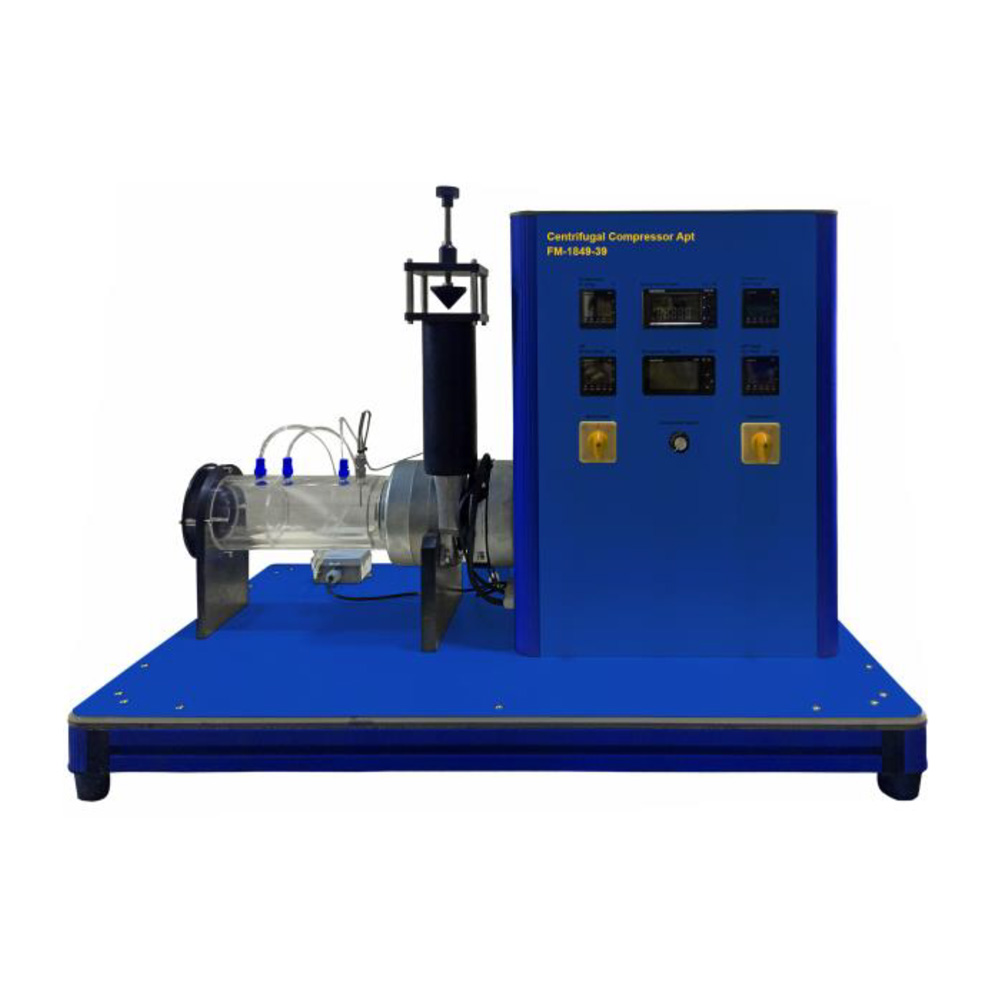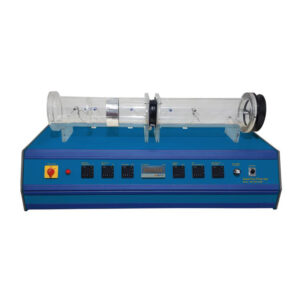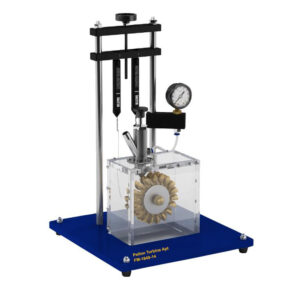Centrifugal compressors are used to compress gases. The medium is drawn in axially to the drive shaft by the rotation of the rotor and flows through the rotor rotating at high speed. By means of centrifugal force, the medium is accelerated towards the outer edge and is compressed in this manner. The experimental unit provides the basic experiments to get to know the operating behaviour and the important characteristic variables of radial compressors. FM-1849-39 features a two/three stages Centrifugal compressor with variable speed via a frequency controller, an intake pipe and a delivery pipe. The intake is transparent. A protective plate placed in front of the inlet of the intake pipe prevents larger objects from being drawn in or the clogging of the intake Opening. The air flow is adjusted by a throttle valve at the end of the delivery pipe. The experimental unit is fitted with sensors for pressure, temperature and speed. The flow rate is determinated via differential pressure measurement on the intake nozzle.
Experiments
- Operating behaviour and characteristic variables of a centrifugal compressor.
- Recording of the compressor curve.
- Effect of the rotor speed on the pressure.
- Effect of the rotor speed on the flow rate.
- Effect of compression on the temperature increase.
- Determination of hydraulic power output and efficiencies.
Specification
- Functioning and operating behaviour of a centrifugal compressor.
- Two/three stages radial compressor with drive motor.
- Variable speed via frequency controller.
- Transparent intake pipe.
- Throttle valve for adjusting the air flow in the delivery pipe.
- Protecting plate at air inlet for undisturbed air flow.
- Determination of flow rate via intake nozzle.
- Display of differential pressures, flow rate, speed, electrical power consumption and hydraulic power output, temperatures and efficiency.
- Optional software with and data acquisition via USB under Windows platform.




